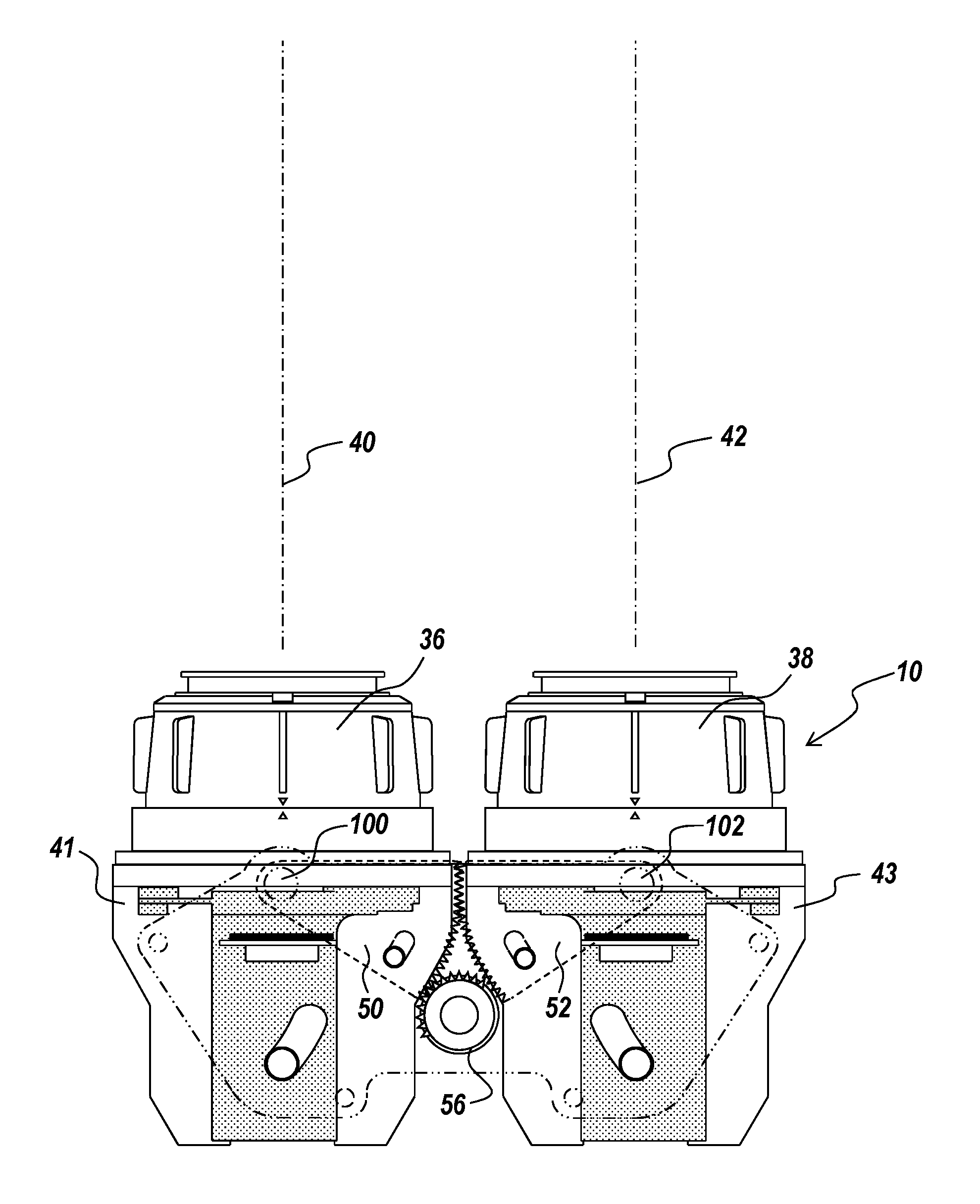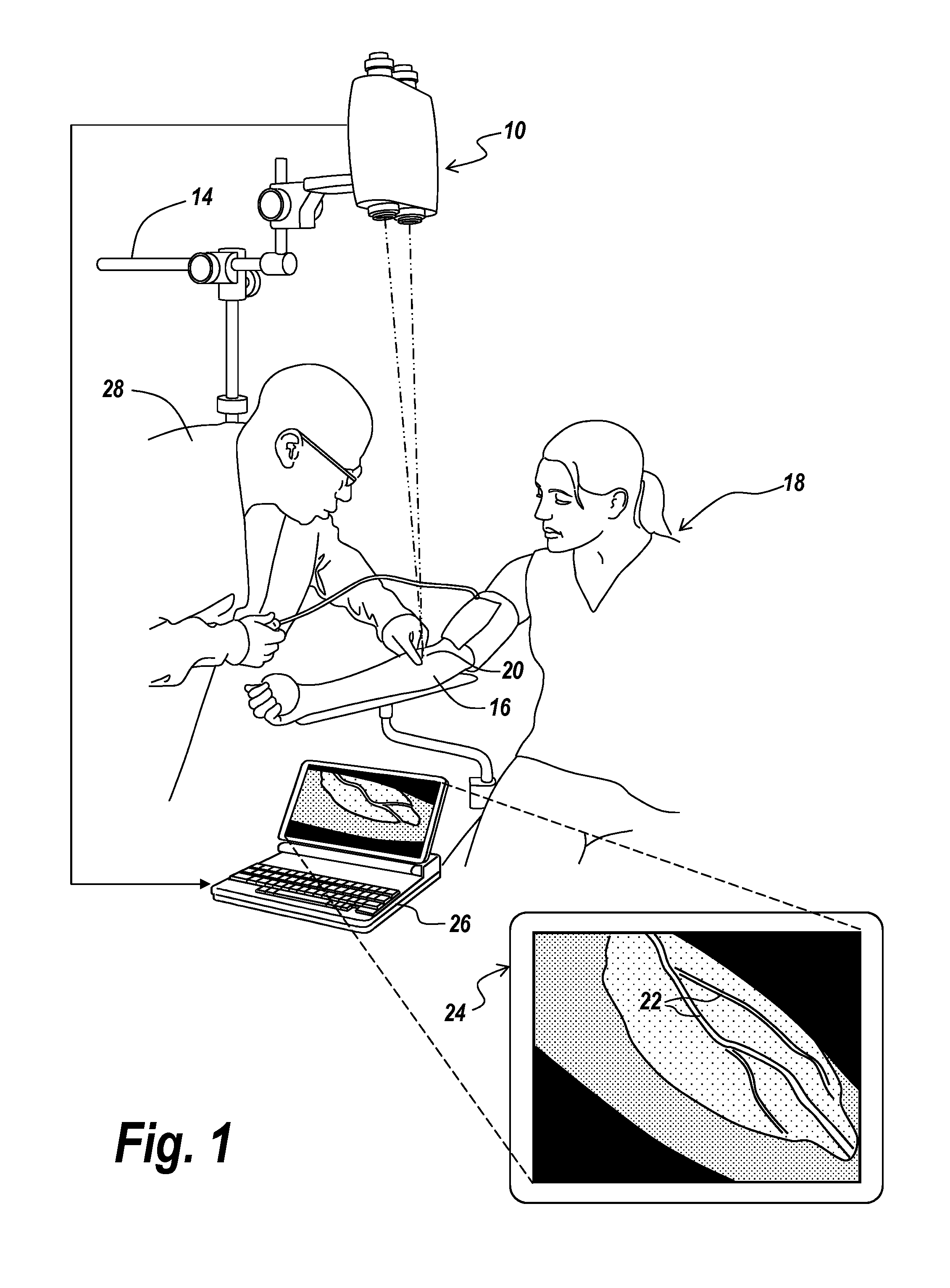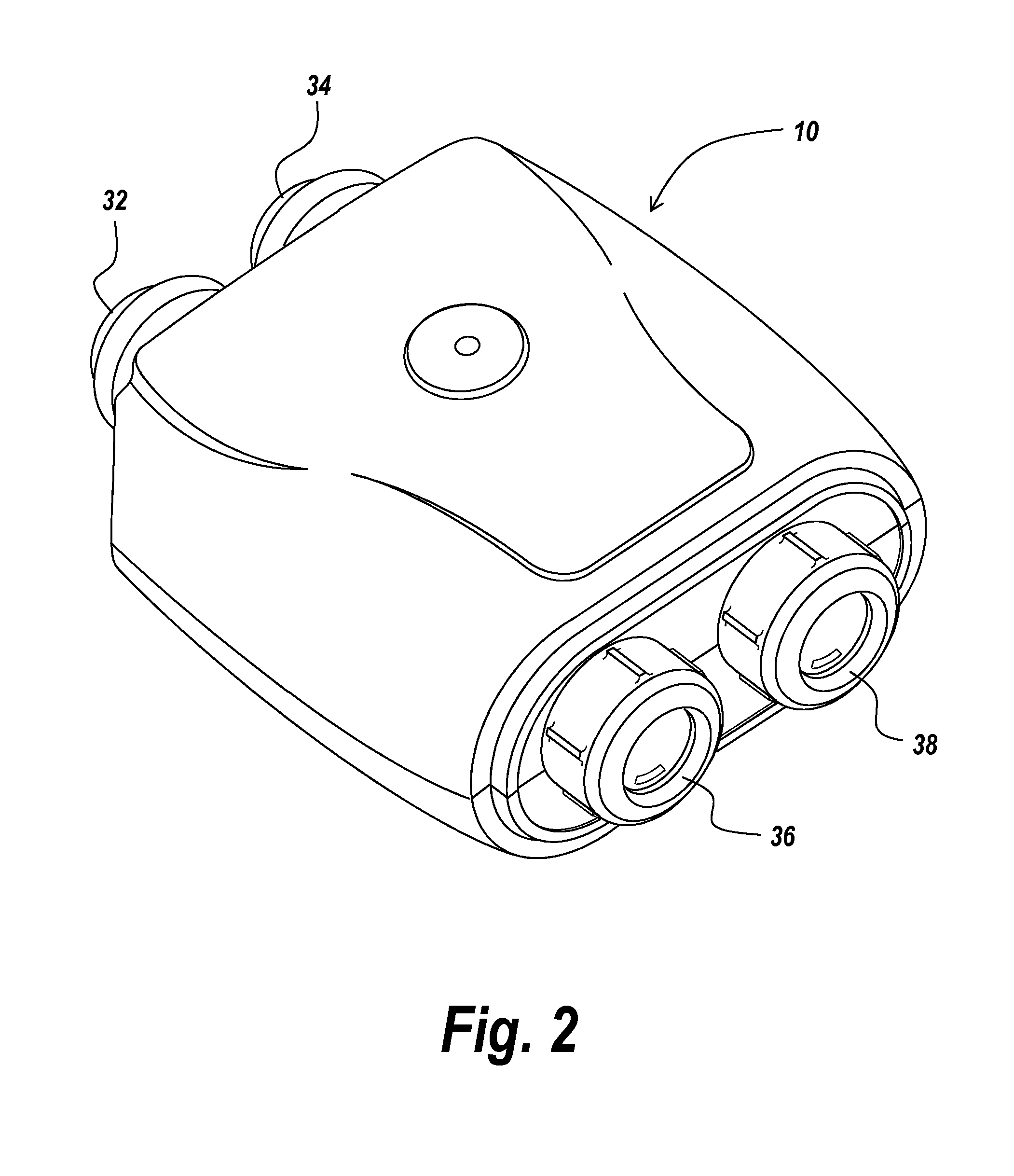Corrolated control for close focus stereoscopic viewing
- Summary
- Abstract
- Description
- Claims
- Application Information
AI Technical Summary
Benefits of technology
Problems solved by technology
Method used
Image
Examples
Embodiment Construction
[0035]Referring now to FIG. 1, a binocular infrared imaging system 10 is located by a support apparatus 14 above the arm 16 of a patient 18 so that the point of focus of the binocular is at a point 20 on the arm of the patient.
[0036]The purpose of providing such an infrared imaging device is to be able to locate subsurface structures in the arm in this case for the purpose of a phlebotomy, in which the subsurface structures to be detected are the veins 22 in arm 16 as projected onto a display 24 when using for instance a computer laptop 26 coupled to the focal plane arrays of the binocular device. It will be appreciated that FIG. 1 is for illustrative purposes to show that the image developed by the infrared binocular is exceedingly crisp and sharp. It will be noted that display 24 may be a three dimensional display for providing depth perception. Alternatively individual LCD displays may be mounted in the eyepieces of the binoculars, with the small LCD displays driven by the focal ...
PUM
 Login to View More
Login to View More Abstract
Description
Claims
Application Information
 Login to View More
Login to View More - R&D
- Intellectual Property
- Life Sciences
- Materials
- Tech Scout
- Unparalleled Data Quality
- Higher Quality Content
- 60% Fewer Hallucinations
Browse by: Latest US Patents, China's latest patents, Technical Efficacy Thesaurus, Application Domain, Technology Topic, Popular Technical Reports.
© 2025 PatSnap. All rights reserved.Legal|Privacy policy|Modern Slavery Act Transparency Statement|Sitemap|About US| Contact US: help@patsnap.com



